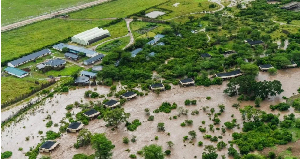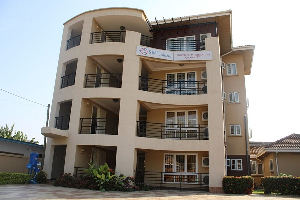Regional News of Thursday, 11 December 2014
Source: GNA
East Africa Team tours FMNR learning site
A 12-Member team from East Africa have undertaken a three day learning tour to the World Vision Farmer Managed Natural Regeneration (FMNR ) Project sites at Talensi and Kassena Nankana West Districts of the Upper East Region.
The Team, which was made up of World Vision’s East Africa Staff included Programme Officers, FMNR Managers and Government Officials from the Ministry of Environment and Natural Resources, and ADP Committee Members from Kenya, Tanzania and Uganda.
The FMNR Project, which was started by World Vision Ghana (WVG) in communities in the Talensi District in 2009, is now a learning centre of excellence for organizations.
The FMNR is an ecological restoration project and involves selecting and pruning stems regenerating from stumps of naturally grown trees on the field, to give fewer ones more space to grow.
This stimulates faster growth of the trees. WVG is ahead of East Africa in terms of the implementation of the FMNR. The visit of the team was to afford them the opportunity to learn and to go back to improve upon the implementation of the FMNR in their country.
The Upper East Operation Based Team (OBT) Leader of WVG, Madam Benedicta Pealore and the Talensi Area Development Programme (ADP) Manager, Mr Frederick Amoanbeng, who received the guests, conducted them around the FMNR sites.
Among the areas they visited included Yameriga FMNR and Beekeeping sites, the Namolgo FMNR and the Acacia field, the Village Saving Loans Association (VSLA) at Balungu, the FMNR at Kassena Nankana West, as well as the Bongo-Soe Shea Pickers and Processing Association, which WVG supported to establish.
Prior to the tour, both the OBT Leader and Talensi ADP Manager took turns to deliver presentations of the area and development programmes and projects being ran by WVG in the Region with emphasis on the FMNR Project.
The Talensi ADP Manager told them about the genesis of the FMNR in the area, what informed WVG’s decision to go into it, the initiation process, the number of farmers and communities engaged in the project, the impact of the project on Food Security as well as the scaling up of the project to other ADPs.
He explained that the assessment of the Natural Resource Management conducted by WVG coupled with climate change conditions and lack of fodder for animals in the area engineered WVG to start the project in the Talensi District in 2009, with technical support from Tony Ranao an expert in FMNR.
Some farmers, he noted, were also taken to Burkina Faso to learn from the farmers there who were already practicing the concept.
He indicated that after building the capacity of the farmers on the technology, they adopted it which led to a lot of benefits including the reclaiming of degraded land, increase of soil fertility leading to food security.
“The FMNR is providing enough fodder for farmers to feed their animals, thatch for them to roof their houses, medicinal plants, fuel wood as well as fruits for children in the communities,” the ADP Manager told the Kenyan Delegation
“We have seen things for ourselves. We have not lost at all for travelling 7,000 kilometers from our country to come and see things for ourselves.
“We have seen the impact of the FMNR on the community members. Now that you have taught us how to fish, we will also learn how to catch,” one of the team leaders, Mr Ivaa Kipui, said.










